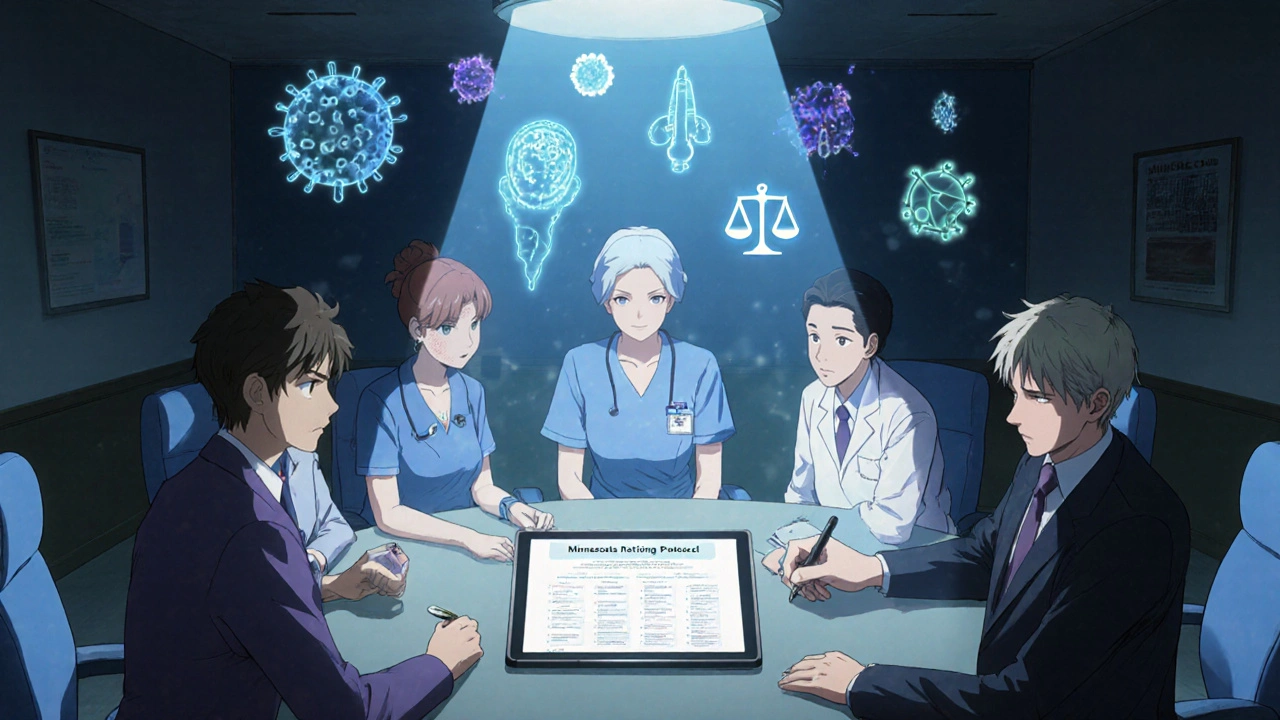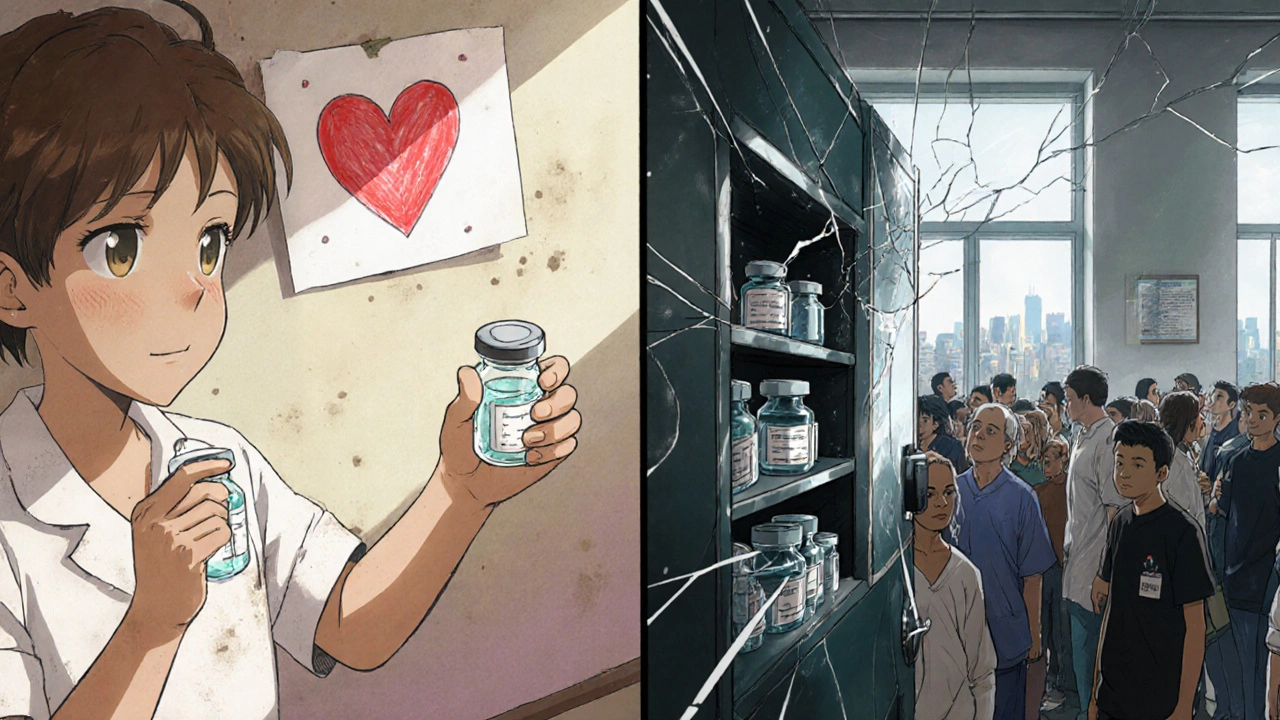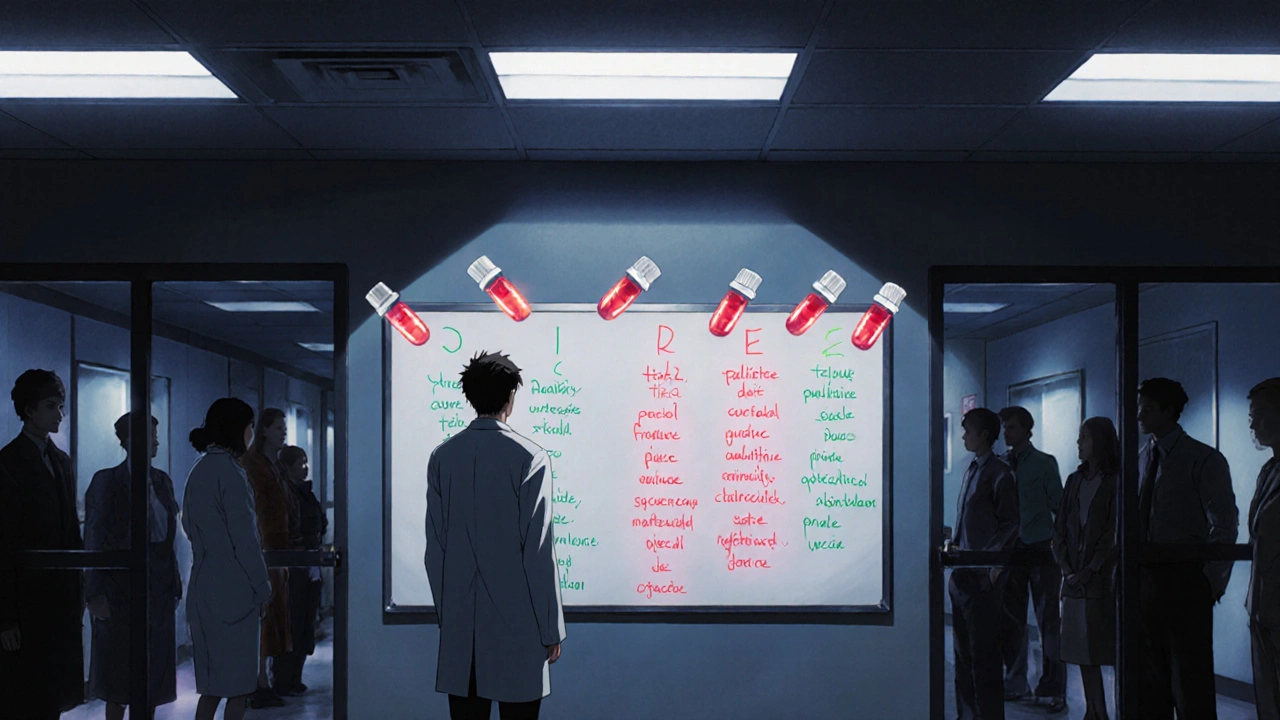When a life-saving drug runs out, who gets it? This isn’t science fiction. It’s happening right now in hospitals across the U.S. and the U.K. In 2023, over 300 drugs were in short supply - including critical cancer treatments like carboplatin and cisplatin. When there’s not enough to go around, doctors aren’t just guessing who gets treated. They’re following ethical frameworks designed to make these impossible choices as fair as possible. But the system is far from perfect.
Why Rationing Happens - And Why It’s Necessary
Drug shortages aren’t new, but they’ve gotten worse. In 2005, there were 61 reported shortages. By 2023, that number had jumped to 319, according to the FDA. Most of these are sterile injectables - drugs given through IV, often in cancer care, intensive care, and emergency medicine. The problem? A handful of manufacturers control most of the market. Just three companies make 80% of generic injectable drugs. If one plant has a quality issue, a whole class of medicines vanishes overnight. When a drug like cisplatin disappears, oncologists face a brutal reality: they can’t treat every patient as they normally would. Without a plan, decisions get made at the bedside - by tired, overworked clinicians under extreme pressure. That’s when bias, luck, or personal relationships can creep in. Rationing isn’t about denying care. It’s about making sure care is distributed in a way that’s consistent, transparent, and fair - even when resources are scarce.The Ethical Frameworks That Guide Decisions
There’s no single rulebook, but several ethical models are used to structure these decisions. The most respected one comes from Daniel and Sabin: the accountability for reasonableness framework. It requires four things:- Publicity - Everyone must know how decisions are made.
- Relevance - Criteria must be based on medical evidence, not opinion.
- Appeals - Patients or families can challenge a decision.
- Enforcement - There must be oversight to make sure rules are followed.

Who Decides? Committees Over Clinicians
The biggest mistake hospitals make is letting individual doctors decide alone. A 2022 JAMA study found that over half of rationing decisions were made by treating teams without any formal process. That leads to chaos. One oncologist might give the last dose to a younger patient. Another might prioritize someone who’s been on the waiting list longer. Neither is wrong - but both are inconsistent. The fix? Multidisciplinary committees. These teams include pharmacists, nurses, doctors, social workers, patient advocates, and ethicists. Hospitals with these committees have 32% fewer disparities in who gets treatment. They also reduce clinician burnout. When doctors aren’t forced to be the bad guy, their moral distress drops. But here’s the problem: only 36% of U.S. hospitals have standing shortage committees. And only 2.8% include ethicists. In rural areas, the gap is worse - 68% have no formal plan at all. That means patients in small towns are more likely to get care based on who speaks up loudest or who knows the right person.What Goes Wrong - And Who Gets Left Behind
Even when frameworks exist, they often fail the people who need them most. A 2021 Hastings Center Report found that 78% of rationing protocols don’t include any explicit measures to protect marginalized groups - Black, Latino, low-income, or rural patients. These are the same populations already more likely to face delays in diagnosis and treatment. Without intentional equity checks, rationing can deepen existing health gaps. Another failure? Communication. Only 36% of patients are told their treatment is being rationed. Many find out later - if they find out at all. One oncologist on ASCO’s forum said she had to choose between two stage IV ovarian cancer patients for the last dose of carboplatin - three times in one month. No one told them why. That’s not just unethical. It’s devastating. Hoarding is another issue. Some departments stockpile drugs to protect their own patients, leaving others with nothing. Pharmacists report this happens in nearly 70% of hospitals. It’s understandable - everyone wants to save their patients. But it makes the shortage worse for everyone else.
How Hospitals Are Trying to Fix It
Some places are getting better. The CDC and ASCO now offer free tools to help hospitals set up allocation systems. ASCO launched an online decision support tool in May 2023. The Minnesota protocol is being studied as a model. And in January 2024, pilot certification programs for rationing committees began in 15 states. Successful hospitals follow a three-step approach:- Conservation - Use the smallest effective dose, stretch the supply with longer intervals between doses.
- Substitution - Switch to another drug with similar effectiveness, even if it’s less ideal.
- Rationing - Only when the first two steps aren’t enough, use the committee to assign doses based on clear criteria.
The Future: Predictions, Politics, and Progress
The FDA is building an AI-powered early warning system to predict shortages before they happen. The goal? Cut shortage duration by 30% by 2025. The National Academy of Medicine is working on standardized ethical metrics - expected in early 2024. These are steps forward. But the root problem remains: the supply chain is fragile. Eighty-five percent of generic injectables come from just three manufacturers. Regulatory rules require manufacturers to notify the FDA six months before a shortage, but only 68% comply. Until there’s real investment in diversified production and better oversight, shortages will keep coming. The real challenge isn’t just about drugs. It’s about values. Do we believe every patient deserves equal access to care - even when resources are tight? If yes, then we need to stop pretending rationing is a rare crisis. It’s a recurring reality. And we need systems that reflect that truth - not avoid it.Is medication rationing legal?
Yes, but only when done through structured, transparent processes. Individual doctors can’t legally refuse treatment based on personal bias. However, hospitals can implement formal allocation plans approved by ethics committees. These plans are reviewed and accepted by medical boards and are designed to ensure decisions are fair, consistent, and based on medical need - not wealth, status, or connections.
Do patients ever get priority because they’re healthcare workers?
Sometimes, but only in specific situations. Some ethical frameworks include “instrumental value” - giving priority to those whose continued health allows them to save others. For example, a nurse working in an ICU during a shortage might be prioritized if their absence would put other lives at risk. But this is rare, carefully documented, and never applied to administrative staff or non-clinical workers. It’s not about status - it’s about preserving the ability to deliver care to everyone.
Why aren’t all hospitals using these ethical frameworks?
Cost, time, and resistance. Setting up a committee takes months - hiring ethicists, training staff, creating protocols. Many hospitals are underfunded or overwhelmed. Some doctors resist because they don’t want to give up control. Others think shortages are temporary and don’t plan ahead. The result? Most hospitals still rely on ad-hoc decisions, even though studies show this increases distress, errors, and disparities.
Can patients appeal a rationing decision?
They should be able to - but often aren’t told they can. Ethical guidelines require an appeals process, but only a small number of hospitals have it clearly defined or staffed. Patients who question why they didn’t get a drug should ask for the hospital’s shortage policy and request a review. If the hospital refuses to explain, that’s a violation of ethical standards.
Are there alternatives to rationing?
Yes - but only if you act early. Conservation strategies like using lower doses or spacing out treatments can stretch supplies. Substituting with similar drugs helps too. But these only work if hospitals plan ahead. The best alternative to rationing is preventing the shortage in the first place - through better manufacturing, diversified suppliers, and stronger regulatory enforcement. Until then, rationing remains the last option.


10 Comments
Gerald CheruiyotNovember 19, 2025 AT 10:07
It’s wild to think we’ve built a system where life-or-death decisions are made by committees instead of doctors alone. But honestly? This is the only way it should be. When you remove personal bias, you remove the chance that someone’s fate hinges on who they know or how loud they scream. The Minnesota protocol isn’t perfect, but it’s a start. We need more of this, not less.
And yeah, I get that it’s cold. But the alternative? Chaos. And chaos kills more people than any rationing plan ever could.
Michael FesslerNovember 19, 2025 AT 20:48
From a clinical pharmacology standpoint, the 3-drug oligopoly in generic injectables is a textbook case of market failure. Vertical integration + low-margin commodities = zero incentive for redundancy. The FDA’s 6-month notification rule is toothless when 68% of manufacturers ignore it. We need mandatory buffer stockpiles + diversified sourcing mandates. Otherwise, we’re just rearranging deck chairs on the Titanic.
Also, ‘instrumental value’ prioritization? Valid. But it must be strictly limited to direct patient-care roles. No admins. No janitors. No HR. If you’re not touching a patient, you don’t get priority. Period.
daniel lopezNovember 20, 2025 AT 20:58
THIS is why the deep state controls everything. You think these ‘ethical frameworks’ are about fairness? Nah. They’re about control. Who picks the committee? Who writes the ‘evidence-based’ criteria? Corporations and bureaucrats. They want you to believe this is science. It’s not. It’s social engineering. They’re deciding who lives and dies so they can push their agenda.
And don’t even get me started on AI predicting shortages. That’s just the next step to total medical surveillance. Next thing you know, your meds are rationed by an algorithm that knows your zip code, your voting history, and your social media likes. Wake up.
Nosipho MbamboNovember 21, 2025 AT 03:17
Okay, but… why are we even talking about this like it’s new? We’ve had this problem for decades. In South Africa, we ration everything-insulin, antibiotics, even painkillers. And no one’s writing 2,000-word essays about ‘ethical frameworks.’ People just… adapt. Or don’t.
Also, ‘multidisciplinary committees’? Sounds expensive. And I’m not convinced they’re less biased than a tired oncologist. Maybe just more paperwork.
Katie MagnusNovember 21, 2025 AT 14:53
Ugh. I’m so tired of people pretending this is a moral dilemma. It’s not. It’s capitalism. If you’re rich, you get the drug. If you’re poor, you get a pamphlet and a prayer. The ‘ethical frameworks’? Just PR for hospitals trying to look woke while they quietly let people die.
And don’t even get me started on ‘instrumental value.’ So nurses get priority? What, because they’re useful? So if I’m a janitor who cleans the chemo unit, I’m out of luck? That’s not ethics. That’s utilitarian cruelty.
King OverNovember 23, 2025 AT 10:20
Been there. Saw a guy get the last dose of cisplatin because his wife cried in the hallway. No committee. No protocol. Just tears. Didn’t feel fair. Didn’t feel wrong either.
People think systems fix this. They don’t. They just make it quieter.
Johannah LavinNovember 25, 2025 AT 05:41
I work in a rural ER. We don’t have a committee. We don’t have a protocol. We have one oncologist who drives 90 minutes to the nearest hospital that still has carboplatin… and she brings back enough for three patients.
She picks who gets it. Not because she’s cruel. Because she’s exhausted. And she loves her patients.
So yeah, I get the frameworks. But if you’re not in the room when someone’s crying because they can’t get their chemo… you don’t get to judge.
Just… give us more drugs. Not more committees.
💔
Ravinder SinghNovember 25, 2025 AT 16:26
As someone from India where generic drugs are lifelines, I’ve seen how supply chains break. But here’s the thing: the real hero isn’t the committee. It’s the pharmacist who stretches a vial across three patients with careful dilution. It’s the nurse who calls every other hospital in the state to find a single dose.
Systems matter. But human grit matters more.
And honestly? If we invested as much in training community health workers as we do in ethics committees, we’d solve 80% of this before it even becomes a crisis.
Also, love that ASCO has a decision tool. Took them long enough. 🙌
Russ BergemanNovember 27, 2025 AT 03:55
Wait. So you’re saying hospitals are letting doctors decide who gets chemo? That’s illegal. That’s malpractice. That’s negligence. They need to be fired. And sued. And banned. And publicly shamed. And…
Also, why isn’t the FDA shutting down these manufacturers? This isn’t a shortage. It’s a crime.
Dana OralkhanNovember 28, 2025 AT 20:40
Just wanted to say-thank you for writing this. I’ve been on the other side of this. My mom got denied a dose because she didn’t fit Tier 1. They never told her why. She found out months later from a nurse who felt bad.
That’s not justice. That’s silence.
And if we’re going to have these frameworks? We need to tell patients. We need to train staff to deliver the news with dignity. We need to stop treating people like numbers.
This isn’t just policy. It’s humanity.